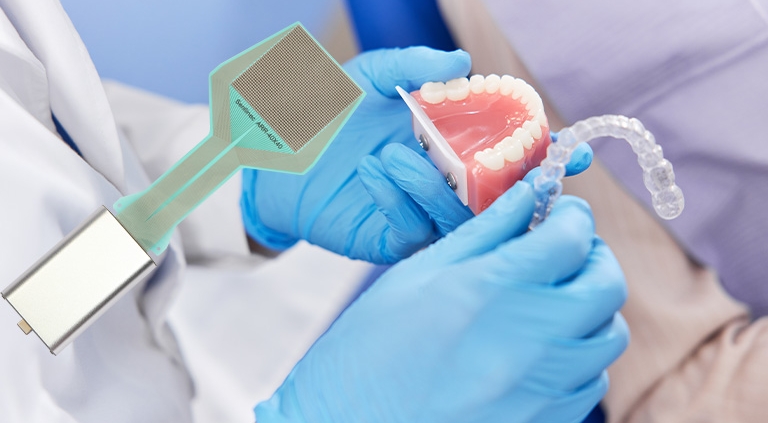Thin-film pressure sensors, known for their high sensitivity and flexibility, are becoming essential tools in the field of dentistry. These sensors can assist dentists in accurately diagnosing and treating various dental issues, thereby improving treatment outcomes and enhancing patient comfort and satisfaction.
Key Advantages
Accurate Measurement of Occlusal Force: Understanding the distribution of a patient’s occlusal force is crucial in dental treatments. Thin-film pressure sensors can precisely measure occlusal force, helping dentists identify contact points on teeth and crowns, optimize force distribution, and prevent tooth wear and periodontal disease.
Real-Time Data Feedback: These sensors can record and transmit occlusal force data in real-time, providing instant feedback through smart devices. Dentists can make real-time adjustments based on this data, enhancing the accuracy and effectiveness of treatments.
Personalized Treatment Plans: With detailed data from thin-film pressure sensors, dentists can develop personalized treatment plans for patients. For instance, when fitting crowns, bridges, or braces, adjustments can be made according to specific occlusal force distributions to ensure better treatment outcomes and patient comfort.
High Comfort Level: The thin design of these sensors makes them almost unnoticeable in the mouth, ensuring they do not cause discomfort for patients. This high comfort level makes them suitable for various dental examination and treatment scenarios.
Application Examples
- Occlusal Force Detection:
- Thin-film pressure sensors can accurately measure a patient’s occlusal force distribution, aiding in the diagnosis and treatment of malocclusion and other issues.
- Adjustment of Dentures and Crowns:
- When fitting dentures and crowns, these sensors help dentists adjust occlusal force, ensuring stability and comfort for the patient.
- Orthodontics:
- During orthodontic treatments, thin-film pressure sensors can monitor the mechanical forces involved in tooth movement, assisting dentists in adjusting braces for optimal results.
- Periodontal Treatment:
- These sensors help monitor the mechanical state of teeth and periodontal tissues, providing more precise treatment plans and preventing periodontal disease.
Conclusion
The application of thin-film pressure sensors in dentistry provides precise, real-time diagnostic and treatment data, significantly improving the accuracy and effectiveness of dental care. By analyzing high-precision mechanical data, dentists can better formulate and adjust treatment plans, enhancing patient comfort and satisfaction. As technology continues to advance, thin-film pressure sensors will play an increasingly important role in dentistry, offering patients improved oral health management experiences.



